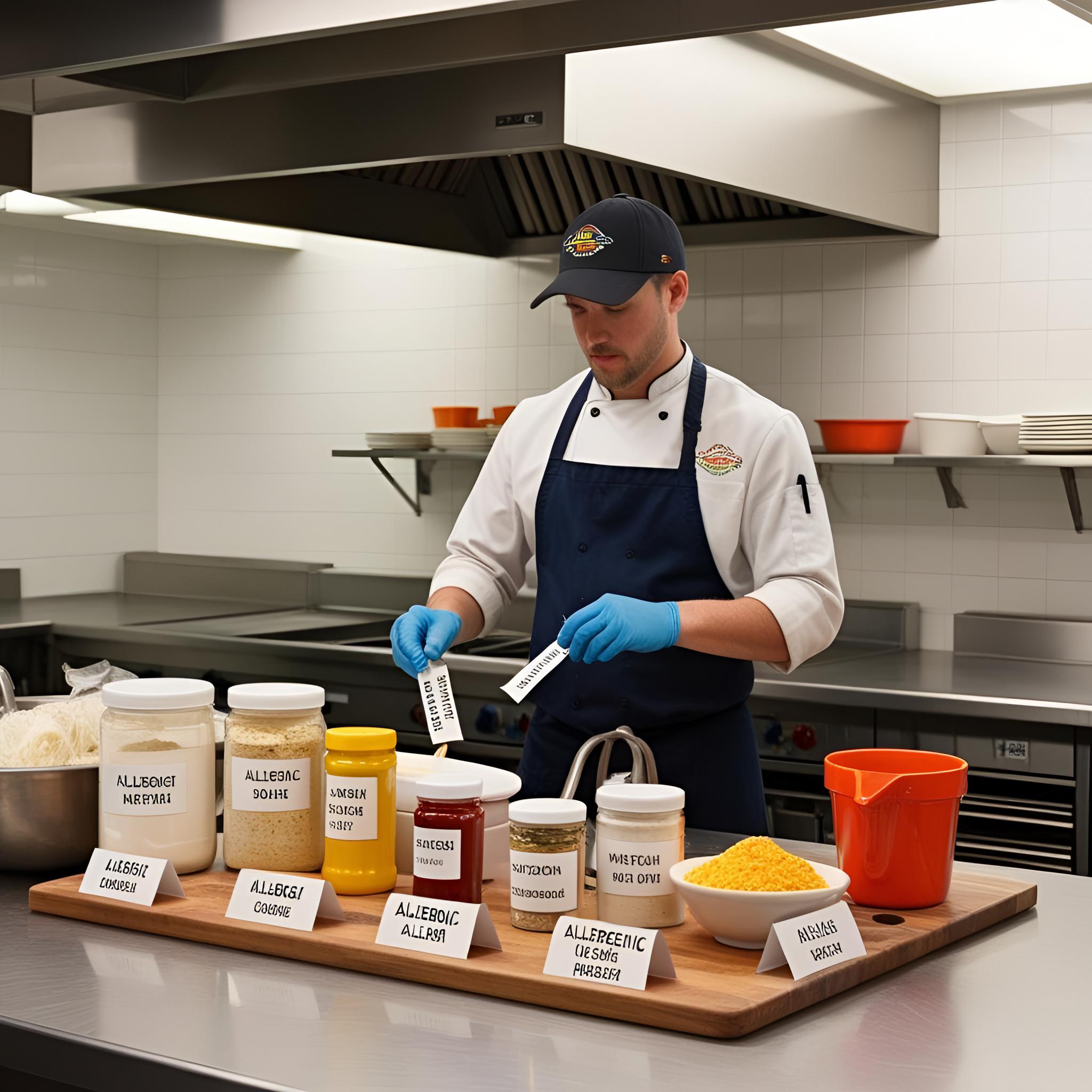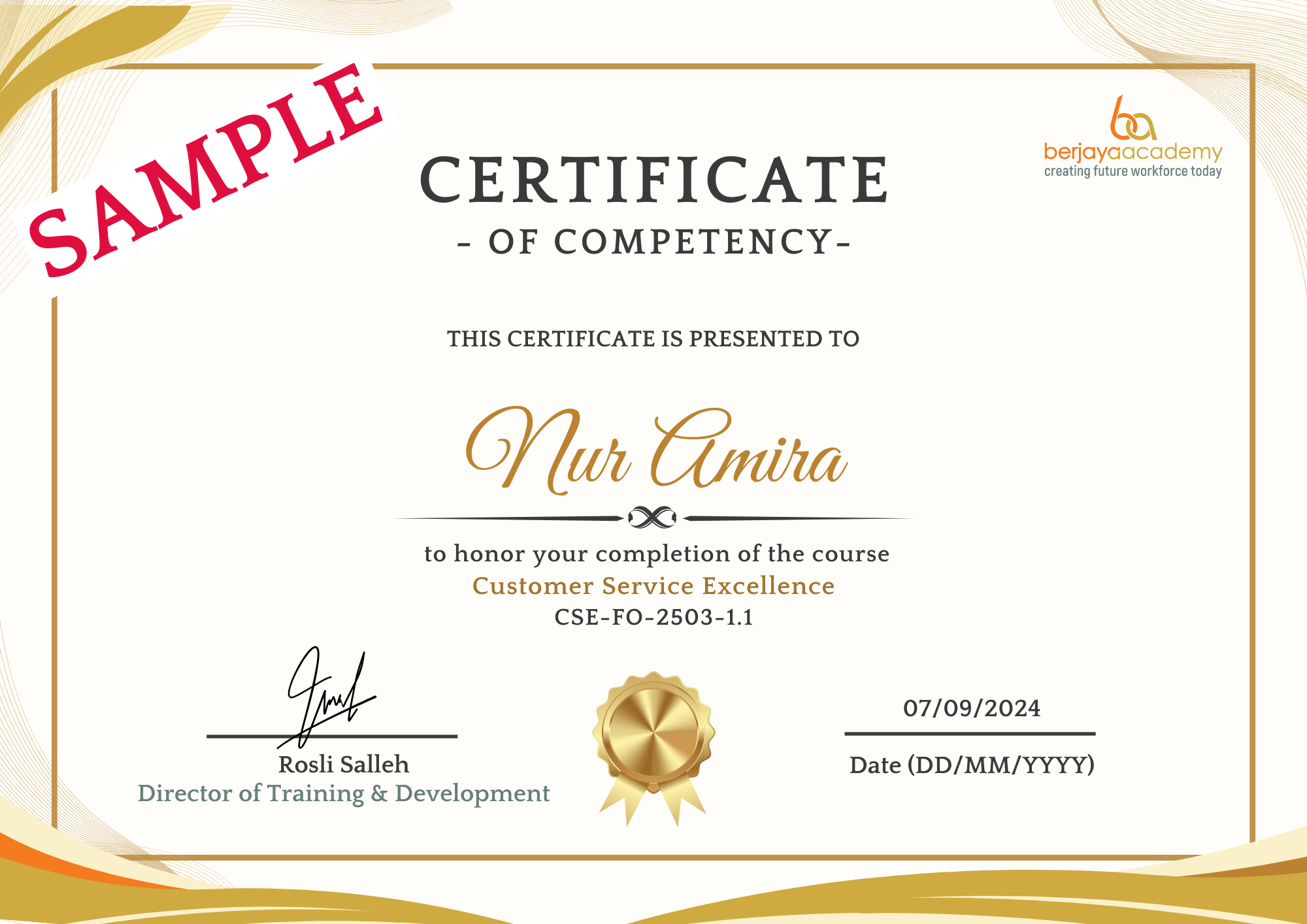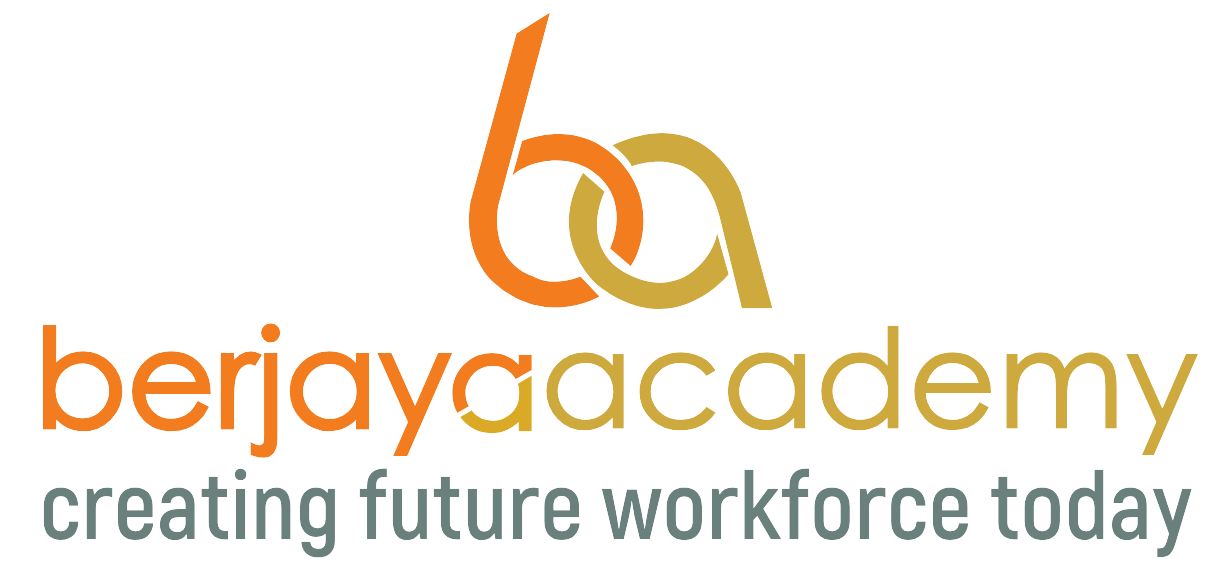
Course Details
Course Title: Allergen Awareness and Management
Course Code: AAM-KS-2503-1.1
Course Accreditation
Accreditation Type: Certificate of Competency
Course Duration
Total Course Hours: 8 hours (1 day)
Course Fee
Total Course Fee: S$180/pax
Funding Available (If Applicable):
- Training Industry Professionals in Tourism (TIP-iT)
- NTUC Company Training Committee (CTC) Grant
Summary
Topics:
- Common allergens and their impact on guests.
- Common allergens and their impact on guests.
- Labeling and segregating allergenic ingredients.
- Responding to allergy emergencies.


Learning Objectives for Allergen Awareness and Management for Kitchen Staff
By the end of this course, participants will be able to:
- Identify common allergens and understand their potential impact on guests, including how to recognize allergic reactions and their severity.
- Implement effective labeling and segregation practices for allergenic ingredients to minimize the risk of cross-contact and ensure the safety of guests with food allergies.
- Respond appropriately to allergy emergencies, including knowing how to provide immediate first aid and when to seek medical assistance.
Learning Units for Allergen Awareness and Management for Kitchen Staff
Unit 1: Common Allergens and Their Impact on Guests
- Objective: Understand the most common food allergens and their potential health impacts on guests.
- Content:
- Overview of the most common allergens (e.g., nuts, dairy, gluten, shellfish, eggs, soy, etc.).
- The symptoms of an allergic reaction (mild to severe, including anaphylaxis).
- The severity of allergies and how they can affect different guests (including potential life-threatening reactions).
- Case studies of allergen-related incidents in the foodservice industry.
Unit 2: Labeling and Segregating Allergenic Ingredients
- Objective: Implement correct procedures for labeling and segregating allergenic ingredients in the kitchen.
- Content:
- The importance of clear labeling on food products and ingredients (e.g., labels indicating potential allergens).
- Safe storage practices for allergenic ingredients to avoid cross-contamination (e.g., separate storage areas, airtight containers).
- Procedures for kitchen staff to identify and manage allergens during food prep (e.g., using separate utensils, cutting boards, and equipment).
- Compliance with local and international food labeling regulations and allergen disclosure requirements.
Unit 3: Responding to Allergy Emergencies
- Objective: Respond quickly and correctly to food allergy emergencies to ensure the safety of guests.
- Content:
- How to recognize signs of an allergic reaction (e.g., swelling, difficulty breathing, rash).
- Steps to take in an allergy emergency, including administering epinephrine (if applicable) and calling for medical help.
- Emergency protocols for kitchen staff to communicate with front-of-house staff and guests about allergies.
- The importance of documenting allergy-related incidents and reporting them for future prevention.
